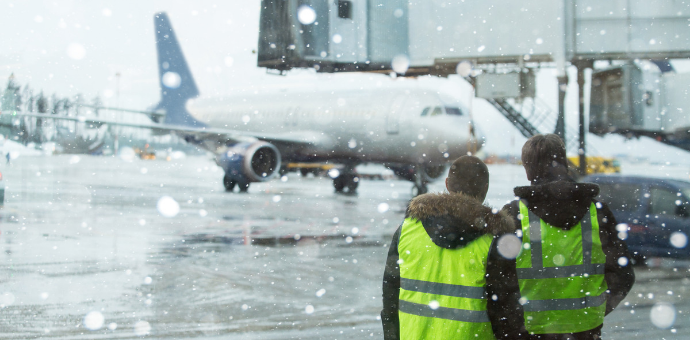Sofemaonline.com offers online training including EASA Part 66 Module 9 Human Factors compliant training for third country workshop personnel.
Introduction
Aircraft Maintenance Engineers are often exposed to a wide range of climates and temperatures from the excesses of summer heat to the extremes of the winter cold. From Dry Heat to Hi Humidity environments (Under conditions of high humidity it is difficult to maintain stable body temperature.)
Controlling the temperature within the Hangar or Workshop Environment is achievable in principle but carries significant cost and the effectiveness of either air conditioning or heating depends on a number of factors. Often hangars are poorly heated and with the doors open or partially open they can be quite draughty.
The body’s metabolism will try to maintain a constant temperature of approximately 37-F. Any loss of heat in the body will trigger a physiological response to maintain body temperature and protecting against the cold involves limiting the loss of body heat by these processes.
Working Environment Requirements
The working environment for line maintenance should be such that the particular maintenance or inspection task can be carried out without undue distraction.
It, therefore, follows that where the working environment deteriorates to an unacceptable level in respect of temperature, moisture, hail, ice, snow, wind, light, dust, or other airborne contamination, the particular maintenance or inspection tasks should be suspended until satisfactory conditions are re-established.
*Note: the use of the term – “unacceptable level” is quite subjective and as a result, it is not unusual for a “blind eye” to be turned to the requirement and for tasks which should be deferred are instead performed
As this requirement is effectively subjective and not prescriptive it is difficult to hold people to account for any shortfall which is perceived.
Mitigations related to Climate & Temperature
Whilst there are no easy answers to address the effects of temperature and climate on the Maintenance staff working on the line, and practically it is not so easy (assuming there is a hangar) to take the aircraft from the line to the hangar!
However, Cold Weather clothing including gloves can work – (taking account of the need for fine motor control).
In the case of direct heat or significant hail or rain, it is often not possible to provide an easy solution.
Do ensure you drink plenty of water in high heat conditions. Prolonged exposure to heat without adequate salt and water intake can lead to heat exhaustion with nausea, weakness, and confusion as common symptoms.
Next Steps
Follow this link to our Library to find & Download related documents for Free.
SAS & SOL offer training in Human Factors, Safety Management Systems Implementation & Management, Maintenance Error Management and Training for Trainers in a Human Factors and Maintenance Environment. For details please see www.sassofia.com & www.sofemaonline.com or email team@sassofia.com
Tags:
Aircraft Maintenance, aviation human factors, Physical Working Environment




